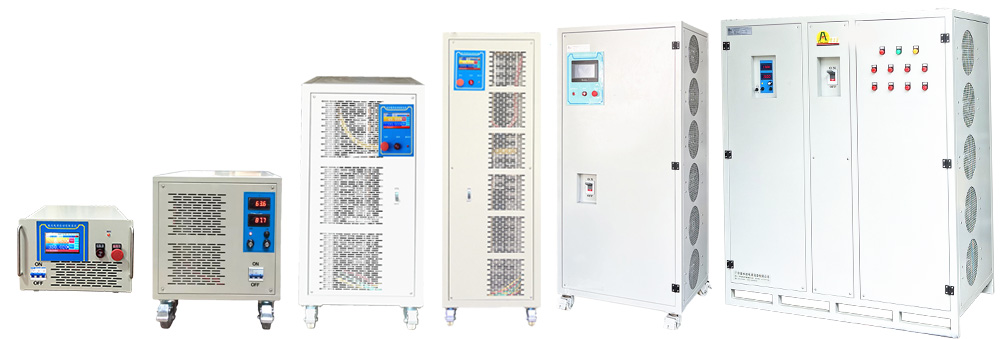DC power ripple refers to the AC component in the output voltage of a DC power supply, which will affect the normal operation of electronic equipment. Therefore, measuring DC power ripple is of great significance to ensure the normal operation of electronic equipment and improve the quality of power supply.
DC power ripple measurement principle
Definition of DC power ripple
DC power ripple refers to the AC component in the output voltage of a DC power supply, usually expressed in peak-to-peak value (Vpp) or effective value (RMS). The size of the ripple is related to factors such as the stability of the power supply, load changes, and parameters of the internal components of the power supply.
Causes of DC power ripple
The main reasons for the generation of DC power ripple are as follows:
1. Nonlinear characteristics of internal components of the power supply: Nonlinear characteristics of components such as rectifier diodes and switching tubes will cause AC components in the output voltage.
2. Switching frequency of the power supply: The switching frequency of the switching power supply is high, which is prone to high-frequency ripple.
3. Load changes of the power supply: Changes in the load will cause fluctuations in the output voltage of the power supply, thereby generating ripples.
4. Power filter circuit: unreasonable design of filter circuit or mismatch of component parameters will result in ripple that cannot be effectively filtered out.
The significance of measuring DC power ripple
Measuring DC power ripple is of great significance to ensure the normal operation of electronic equipment and improve the quality of power supply. By measuring ripple, you can:
1. Evaluate the stability of the power supply: the size of the ripple can reflect the stability of the power supply. The smaller the ripple, the better the stability of the power supply.
2. Diagnose power supply failure: abnormal changes in ripple may be a sign of power supply failure. By measuring ripple, you can find and eliminate the fault in time.
3. Optimize power supply design: by measuring ripple, you can find deficiencies in power supply design, thereby optimizing power supply design and improving power supply performance.

DC power supply ripple measurement instrument
1. Oscilloscope
The oscilloscope is the main instrument for measuring DC power supply ripple. It can intuitively display the voltage waveform, which is convenient for observing and analyzing ripple. The selection of oscilloscope should consider the following factors:
Bandwidth: The bandwidth of the oscilloscope should be greater than the highest frequency of the measured signal to ensure the accuracy of the measurement.
Sampling rate: The sampling rate of the oscilloscope should be high enough to ensure that the rapidly changing ripple signal can be captured.
Input impedance: The input impedance of the oscilloscope should be large enough to avoid affecting the circuit under test.
2. AC millivoltmeter
The AC millivoltmeter can measure the effective value (RMS) of the ripple, which is suitable for quantitative analysis of the ripple size. When selecting an AC millivoltmeter, pay attention to its measurement range and accuracy.
3.Spectrum analyzer
The spectrum analyzer can measure the spectrum distribution of the ripple, which helps to analyze the source and characteristics of the ripple. When selecting a spectrum analyzer, pay attention to its frequency range and resolution.
DC power supply ripple measurement steps
1. Prepare the measuring instrument
According to the parameters and requirements of the power supply under test, select a suitable measuring instrument, such as an oscilloscope, AC millivoltmeter, etc., and calibrate it.
2. Connect the measuring instrument
Connect the measuring instrument to the power supply under test, and be careful not to affect the normal operation of the power supply. The probe of the oscilloscope should be connected to the output terminal of the power supply, and the input terminal of the AC millivoltmeter should be connected to the output terminal of the power supply.
3. Set measurement parameters
According to the parameters and requirements of the power supply under test, set the parameters of the measuring instrument, such as the time base and vertical magnification of the oscilloscope.
4. Observe and record ripple
Turn on the power supply, observe the voltage waveform on the oscilloscope, and record the peak-to-peak value (Vpp) or effective value (RMS) of the ripple. If an AC millivoltmeter is used, the effective value of the ripple can be read directly.
5. Analyze ripple characteristics
According to the measurement results, analyze the frequency, amplitude and other characteristics of the ripple to determine the source and influencing factors of the ripple.
6. Optimize power supply design
According to the measurement results and analysis, optimize the power supply design, such as adjusting the filter circuit, improving the switching frequency, etc., to reduce the ripple.
Precautions for DC power supply ripple measurement
1. Measurement environment
The measurement environment should be stable to avoid environmental factors such as temperature and humidity affecting the measurement results.
2. Calibration of measuring instruments
The measuring instrument should be calibrated regularly to ensure the accuracy of the measurement results.
3. Grounding of measuring instruments
The grounding of the measuring instrument should be good to avoid the influence of poor grounding on the measurement results.
4. Input impedance of the measuring instrument
The input impedance of the measuring instrument should be large enough to avoid affecting the circuit under test.
5. Measurement time
The measurement time should be long enough to ensure the stability and reliability of the measurement results.
6. Selection of measurement method
According to the parameters and requirements of the power supply under test, select a suitable measurement method, such as an oscilloscope, AC millivoltmeter, etc.
IDEALPLUISNG Power Expert:
We focus on the research and development, sales and services in the fields of DC-DC power modules, AC-DC rectifier modules, DC-AC inverters, AC power supplies, DC power supplies, LED power supplies, chargers, rectifier systems, etc., providing personalized, efficient, reliable and cost-effective power solutions for all walks of life.
If you need any help, please contact us now! We will not charge any fees for any questions you may have, but this may be an opportunity for both of us!
Thank you for considering our services.







